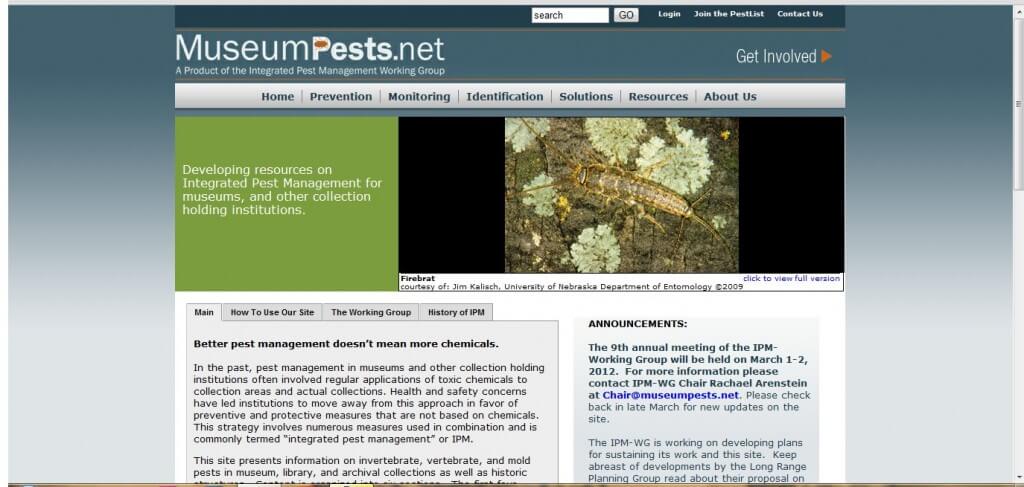Integrated Pest Management (IPM). It sounds like I wield a tiny whip and chair in my top hat, taming a circus of cockroaches, mice, and odd beetles.
Not quite.
IPM is a system of monitoring, housekeeping, and selective treatment used to prevent infestation and the resulting damage to museum collections. It is one of the weapons in a collection manager’s or preventive conservator’s arsenal. Why not treat everything with pesticide, you might ask?
That was exactly the approach for many decades of museum practice. Cases built for the Smithsonian Institution were originally fitted with holders for pesticide materials. But as museum staff and users go to work with those collections in the future, we have found ourselves with a great health risk on our hands. Arsenic. Cyanide. DDT. These are just a few of the hundreds of materials used to protect collections from pests, and in turn, we’ve put ourselves at risk. This is compounded by a lack of documentation – we might not realize what has been treated in the past. Protection against contamination requires proper use of personal protective equipment: gloves, labcoats, and in some instances, respirators and goggles. A rule of thumb: if you are surprised an object has survived, there’s probably a reason why.
 IPM contains some integral components (and visit the excellent site museumpests.net for more information):
IPM contains some integral components (and visit the excellent site museumpests.net for more information):
- Regular housekeeping – this generally means vacuuming the floor. Remove the food source for insects and insects are less likely to come in.
- Monitoring – any museum storeroom you enter is lined with sticky traps. Regular examination tells us what populations live in that space, and whether their numbers are stable, or increasing. We identify the pests (are they threatening to the collection? Are they here to eat other pests we might not be seeing?), record how many we found, and if numbers get high, we start a vigilant campaign to reduce their numbers. Right, more vacuuming.
- Deterrents – design of the physical structure prevents passage of the pests into a storeroom space. Seamless baseboards, where the floor and baseboard are one (yes, they exist, and they are beautiful). Gaskets on doors. Sticky mats at storeroom entrances to reduce dirt and nutrient matter.
- Policy – Making sure visitors to the collection leave their bags and coats outside the storeroom. No food and drink in the storeroom.
- Treatment when necessary, using non-toxic methods. Treatment today often focuses on anoxic methods (sealing the object with argon to suffocate pests) or freezing.
Every once in a while, you’ll find yourself having to dispose of a live one. IPM isn’t for everybody. But it is for the preservation of collections, and the staff that work with them.

[…] be participating in an Integrated Pest Management (see my post “IPM is not for Buddhists“). IPM is a systematic approach to deterring pest incursion in collections, and subsequent […]